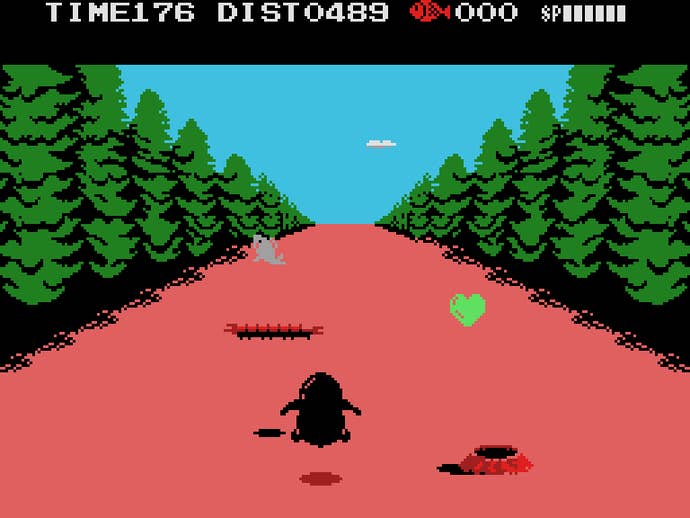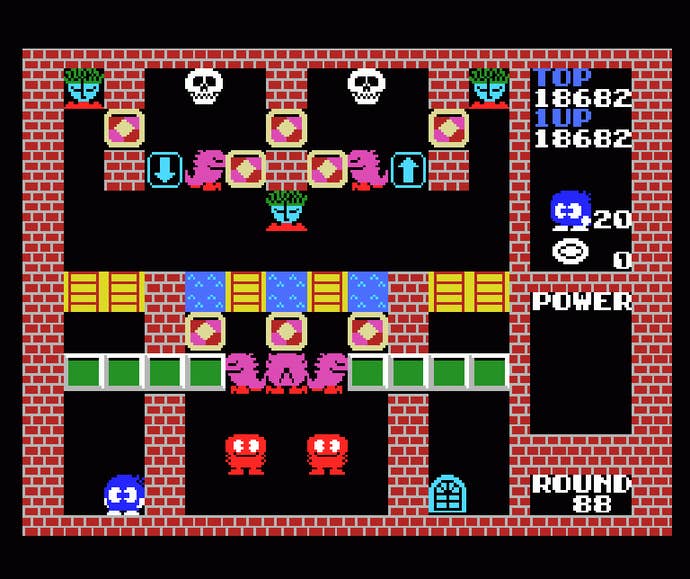The Most Essential MSX Games of All Time
Key titles from the most successful Japanese game system you've probably never played.
This article first appeared on USgamer, a partner publication of VG247. Some content, such as this article, has been migrated to VG247 for posterity after USgamer's closure - but it has not been edited or further vetted by the VG247 team.
While the MSX never made its way to the U.S. in any significant form, its overseas popularity made for an expansive library that can be found pretty easily at any classic gaming shop in Japan. It may lack the cultural impact and familiarity of the NES/Famicom, but the MSX had its share of classics. Here are seven key titles worth checking out on the original MSX (not the more advanced MSX/2, which deserves a list of its own).


The Black Onyx
1984, Bullet-Proof Software
One of the earliest role-playing games designed specifically for the Japanese market, The Black Onyx often finds itself cited as a bridge between Wizardry (the influential Canadian RPG series) and Dragon Quest (which of course turned Japan into its RPG-hungry self). Curiously, this essential JRPG was helmed by a Dutchman (Henk Rogers, who later would play a pivotal role in the Tetris saga) -- but it did fairly well for itself, offering a novel-at-the-time combination of accessibility (previous JRPGs defined the word "obtuse") and native Japanese text.
Originally designed for the PC-8801, The Black Onyx found a natural home in the MSX thanks to the system's hybrid console/PC design. The game appeared on plenty of other platforms as well, though by most accounts its console ports were nowhere near as polished as this version. By today's standards, The Black Onyx feels painfully outmoded: It's a slow first-person dungeon crawl with a high difficulty level and an oblique interface. Still, for many Japanese gamers in the '80s, it offered their first taste of the role-playing genre that would go on to enjoy explosive popularity just a few years later.
Penguin Adventure
1986, Konami
This forward-scrolling runner (think Crash Bandicoot with primitive sprite-scaling) might have been washed away by the tides of time if not for one simple quirk: One of its key designers was a fresh-faced fellow by the name of Hideo Kojima, who would go on to find modest success with an MSX/2 game called Metal Gear.
Really, though, despite having gone down as more or less a point of trivia on a famous designer's C.V., Penguin Adventure wasn't too shabby. Its linear action offered considerably more depth than its predecessor, with expanded choices of scenery (just don't ask what a penguin is doing in the jungle), usable items, even boss fights. And for fans of the quirky and obscure, its protagonist Pentarou would enjoy his own measure of success beyond his own debut here, appearing as a character in the likes of Parodius and Konami Krazy Racers.


Romancia
1987, Nihon Falcom
Developer Nihon Falcom has always been an oddity: A Japanese developer focused primarily on developing action-RPGs for personal computers. You can trace that back all the way to Romancia (and even earlier), a short and almost hilariously difficult project co-developed for MSX and PC-9801. It looks remarkably similar in style to Nintendo's Zelda II (released at roughly the same time as Romancia), but the two games take a very different approach to their design. Where The Adventure of Link sent players on a lengthy quest through a sprawling Hyrule, Romancia comprises very little terrain and gives you only half an hour to complete it.
The end result is a strange mix between an action game, an RPG, and a time attack challenge. Players need to complete a number of tasks (some more arcane than others) in order to complete the game. Die in combat -- quite likely, given the unfriendly controls -- or run out of time and it's right back to the start to scurry through fetch quests and get back into the action as quickly as possible.
Guardic
1986, Compile
This esoteric shooter is one of those games that would have gone down in the flames of obscurity if not for a moderately well-known sequel: The Guardian Legend (aka Guardic Gaiden) for NES. Don't go hunting for the original Guardic in hopes of finding a cool shooter/Zelda hybrid similar to its sequel. You can see Guardian Legend's DNA taking shape here, but in a radically different form than appeared in the NES classic. Imagine if the corridor shooter portions of Guardian Legend played out as screen-by-screen mazes and you have a good sense of what Guardic is about.
While considerably less dynamic and creative than its more famous offshoot, Guardic makes for an interesting piece of work regardless. Its mazelike layout and shop-based upgrade system are a far cry from the standard shooter of its era, lending the action an RPG-like feel and placing an emphasis on learning level layouts and navigation. Weird and mostly forgotten, but worth checking out. Handily, D4 reissued it a couple of years ago for iOS, so getting up to speed on this oddball moment in game history will set you back a mere $3.99.


Knightmare
1985, Konami
If this curious top-down shooter looks familiar, it's because Squaresoft completely ripped it off with their NES game King's Knight, another top-down auto-scrolling shooter with a medieval theme. They weren't even subtle about it; just compare the games' names! Sadly for Square, Knightmare is the better game: It looks nicer, controls better, relies less on obscure hidden secrets, and doesn't force you to swap characters. Not only that, but is sequel -- Knightmare II: Maze of Galious -- turned out to be one of the best games for the MSX/2 platform.
Like most of Konami's 8-bit hits, Knightmare has a certain unmistakeable visual style and catchy music. The play mechanics stray a bit from the Konami norm, though: Knightmare scrolls slowly from bottom to top, and your knightly hero flings swords in rapid succession at wave after wave of enemies. Despite the MSX's relatively modest power, Knightmare quickly becomes the mid-'80s equivalent of a "bullet hell" danmaku shooter. A technical showcase for the system and a pretty good game to boot -- not bad.
Eggerland Mystery
1985, HAL
While you may not know it by the name "Eggerland," any fan of the NES will recognize HAL's puzzler by its localized name: The Adventures of Lolo. Admittedly, the original Eggerland Mystery isn't exactly Lolo (you can read about the whole sordid saga of its localization on Hardcore Gaming 101), but not only will you find the fundamentals of the NES trilogy laid down here, you'll also recognize a fair number of its puzzles.
An expanded take on the Sokoban style of sliding-block puzzles, Eggerland Mystery raises the stakes on the puzzler format by incorporating a variety of block types, enemies, and a limited set of skills for its humble hero. Each puzzle has a "proper" solution, though you can sometimes get lucky and figure out a way the developers never intended. Mentally taxing and occasionally requiring nimble fingerwork as well, Eggerland Mystery (and America's Lolo sequels) remains highly playable to this day and begs the question of why HAL hasn't bothered to revisit the series of late -- today's mobile market seems a perfect match for Lolo's style.
Images from VG Museum, HG101, and Generation MSX
